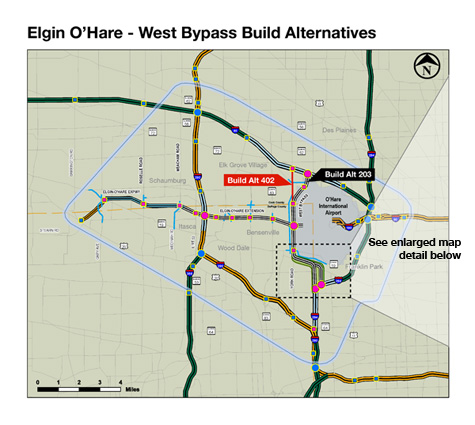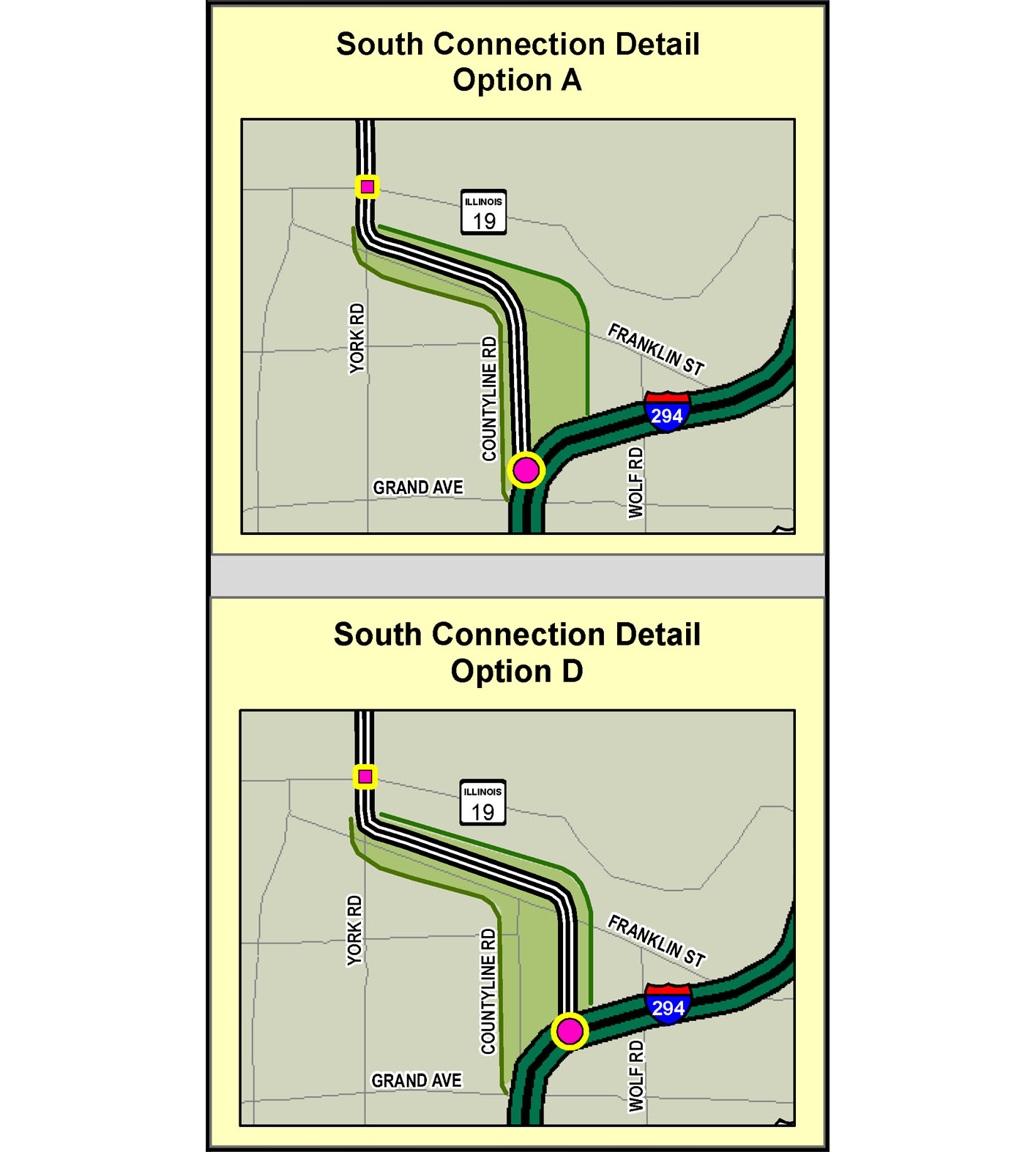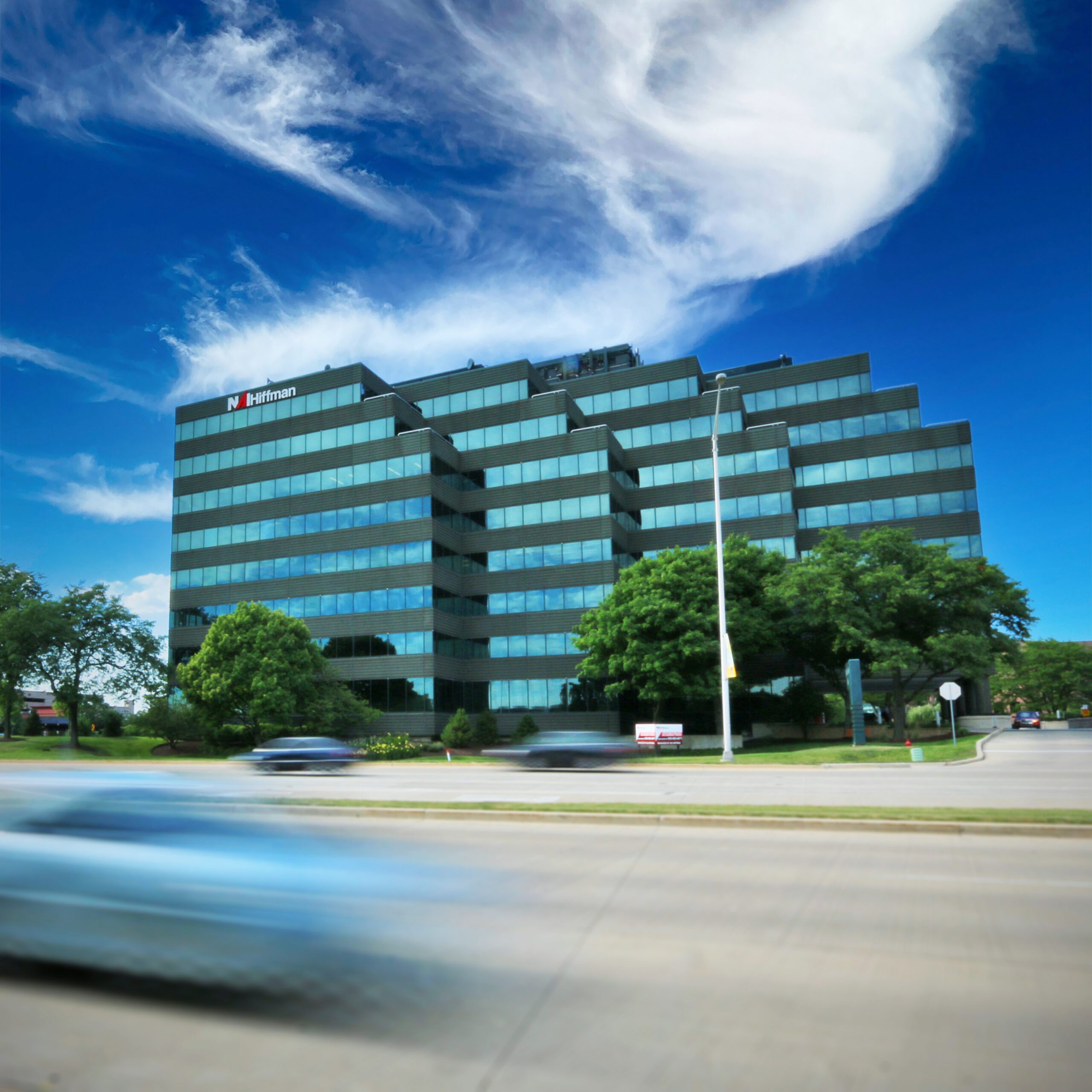July 2009
Elgin O’Hare-West Bypass to Reshape O’Hare Industrial Market
By Adam MarshallNAI Hiffman
Since the 1960’s the Elgin O’Hare Expressway has been a work in progress. From early design work in the 1970’s to construction of a portion of the existing expressway in the early 1990’s, it has been a focal point to ease traffic congestion in the region. With the current O’Hare Modernization Program well underway to expand capacity and infrastructure at O’Hare Airport, there is a clear focus today on how all of the transportation systems in this area tie together to run more efficiently, which will greatly impact the industrial markets surrounding O’Hare.

The Illinois Department of Transportation (IDOT), under a $140 million grant from the Federal Highway Administration (FHWA), is currently developing a comprehensive transportation plan that includes connecting to the City’s proposed O’Hare western terminal, an extension of the Elgin O’Hare Expressway to O’Hare and a western bypass of O’Hare connecting I-90 and I-294. IDOT has determined that with or without O’Hare airport expansion, the current system is over congested and is working together with residents, businesses and civic leaders in the 27 community study area which is loosely bound geographically by I-90 on the north, the western terminus of the existing Elgin O’Hare expressway at Route 20 on the west, I-290 on the south and I-294 on the east. The project, known as the Elgin O’Hare – West Bypass, is specifically designed to accomplish four major objectives: improve local and regional travel, improve travel efficiency, improve access to the west side of O’Hare, and improve modal connections and opportunities. IDOT’s transportation plan is comprehensive and includes roadway and mass transit components, as well as bike/pedestrian considerations.
The Elgin O’Hare – West Bypass project is broken down into three phases. Phase One includes two tiers of environmental and engineering studies. Tier One will develop a master plan, at a conceptual level of detail for improvements to roadways, transit facilities, bike/pedestrian connections, and transportation management strategies to determine a preferred transportation system. Tier Two will consist of detailed environmental and engineering studies for priority roadway elements. Likewise, the transit elements will be studied to the higher level of detail and implemented by the various transit agencies (Metra, PACE, CTA) for their identified priority projects. Phase Two includes contract plan development and right-of-way acquisition along the identified preferred corridor. Phase Three is the construction of the preferred roadway system improvements.
Currently IDOT is in Tier One of the first phase of the planning process, identifying the preferred overall transportation system alternative for the study area that will be outlined in a Final Environmental Impact Statement (FEIS). Over the past two years, IDOT has studied the impact of 15 original plans developed via public feedback. Analysis of the various metrics involved, as well as public input/comments has narrowed the options to two preferred transportation system alternatives. Tier One will conclude with a Record of Decision for the FEIS which will identify the preferred transportation system alternative, implementation and funding options. Tier Two will take the preferred roadway system concept and provide engineering details for the priority projects.

The common element between both of the finalist systems is extending the Elgin O’Hare expressway east to York Road from its current terminus at Rohlwing Road/I-290 and constructing the south leg of the West Bypass to connect with I-294 via two alternative routes: options “A” or “D”. System alternative 203 would build the north leg of the West Bypass as a limited access expressway east of York/Elmhurst Road on O’Hare property that will connect to I-90. System alternative 402, would utilize York/Elmhurst Road as the north leg of the West Bypass by increasing the capacity of the roadway and providing a full access interchange connection at I-90 rather than providing a limited access expressway.
The two finalist system alternatives will be summarized in a Draft Environmental Impact Statement (DEIS) to be released in late summer 2009. The FHWA will approve the DEIS at which time it will be distributed to the public for feedback and a Public Hearing will be held in early fall 2009. After the Public Hearing, comments will be addressed and the FEIS will be written and recommend one of the two finalist roadway alternatives, along with the preferred south I-294 connection option and the FHWA will provide a Record of Decision which will allow IDOT to begin engineering details of the roadways.
Once the Record of Decision is made, regardless of funding, the final concept will define a corridor plan that includes several roadways. Each of these roadways may be individual project elements that make up the overall roadway plan. Each project must have independent utility, which means that they could be built in stages independently from one another. The two finalist plans both outline a south connection that will undoubtedly require IDOT to acquire several industrial properties in the proposed right-of-way, depending upon which south connection option (“A” or “D”) is the preferred alternate. These properties are heavily concentrated in Franklin Park and/or Bensenville, along Green Street/Franklin Avenue between County Line Road and Wolf Road. There will also be properties in Bensenville and Elk Grove Village along York/Elmhurst Road that would be affected. This impact to industrial properties in the O’Hare market will eventually result in the loss of businesses, jobs and property tax revenue for these villages.
The initial projected costs to acquire land and build infrastructure for the proposed Elgin O’Hare – West Bypass is $2.6 billion (Alt 402) to $3.6 billion (Alt 203) in 2009 dollars. While skeptics can argue that the high cost will prevent the project from completion, there are a few factors that could help Illinois raise the money to fund this plan. The most high profile of these factors is Chicago’s bid to host the 2016 summer Olympics. On October 2, 2009 the host city will be announced amongst the four finalist cities of Chicago, Rio DeJanero, Tokyo and Madrid. Olympic organizers in Chicago anticipate that federal and state funds will be committed to enhance the performance of the current transportation system, should the city be chosen to host the games. Another important factor is the appointment of Ray LaHood to Transportation Secretary by the Obama administration. A downstate Illinois republican, LaHood served in the U.S. House of Representatives from the 18th District of Illinois from 1995-2009. He will be leading the massive public works program President Obama announced this past December. LaHood is in the process of distributing money to state transportation agencies and expects to see transportation and public works construction projects begin this summer.
The Chicago region has lived with the fact that the Elgin O’Hare Expressway neither connects to Elgin nor O’Hare. Over the past 40 years, IDOT has acquired land along the proposed corridor with the intention of someday completing the project. At least on paper, the Elgin O’Hare expressway will soon connect to O’Hare. And in the near future, that reality will determine the fate of the industrial base that stands in the way of this progress.
Adam Marshall is an industrial real estate expert at NAI Hiffman who focuses on the O’Hare and surrounding markets. Adam can be reached at (630) 691-0603 or amarshall@hiffman.com. For more information on the proposed Elgin O’Hare – West Bypass, visit the IDOT website http://elginohare-westbypass.org
Source: Chicago Industrial Properties


